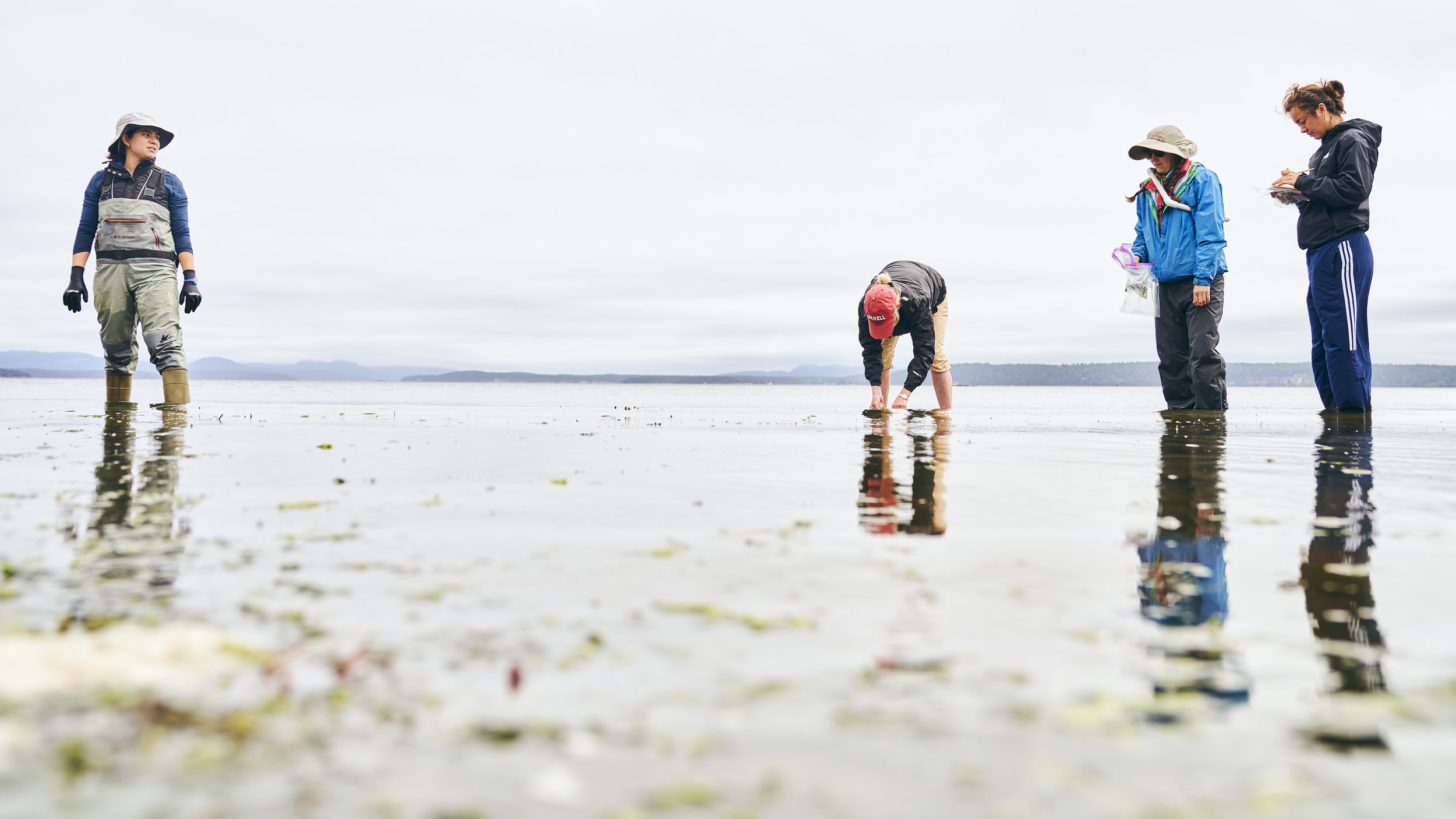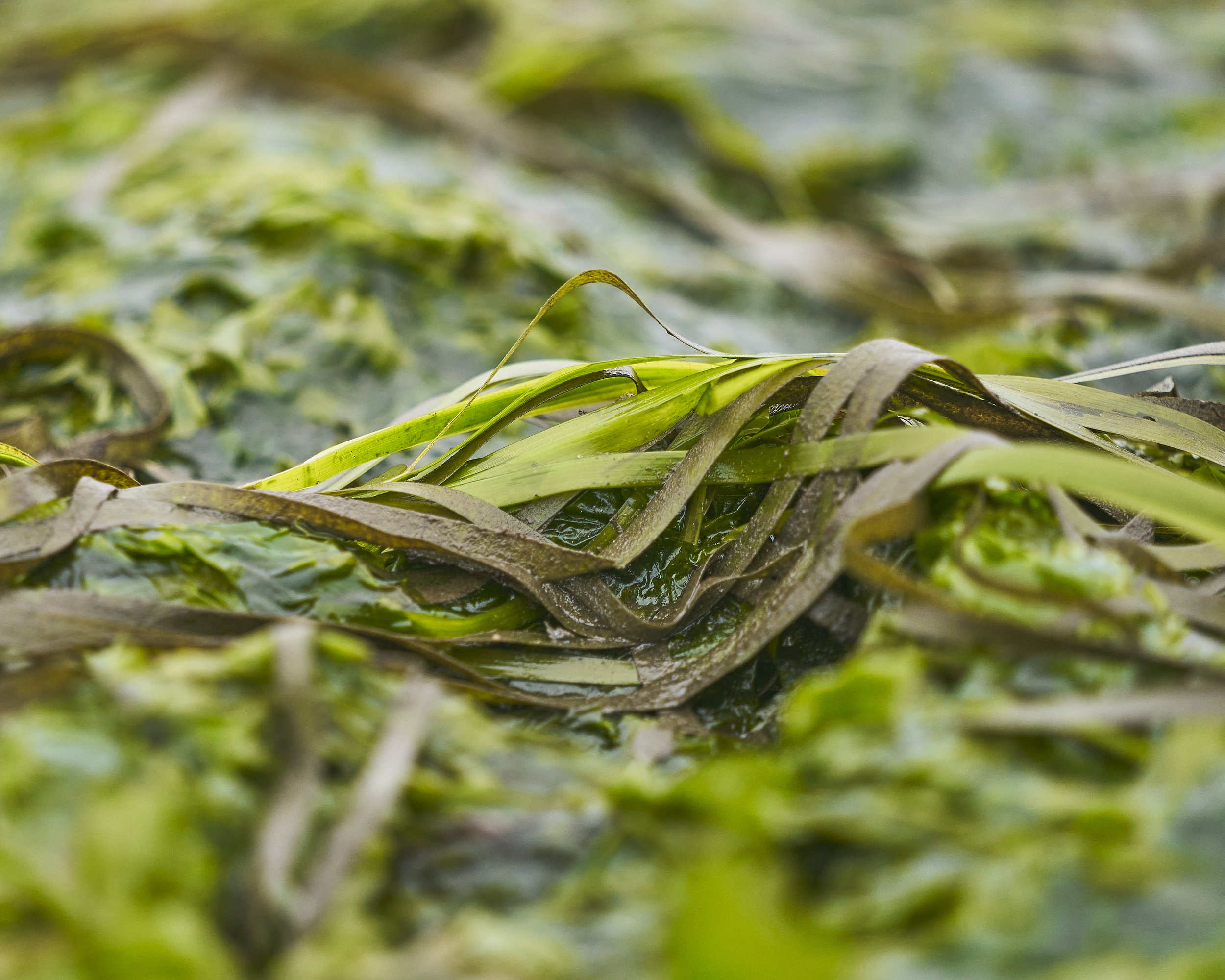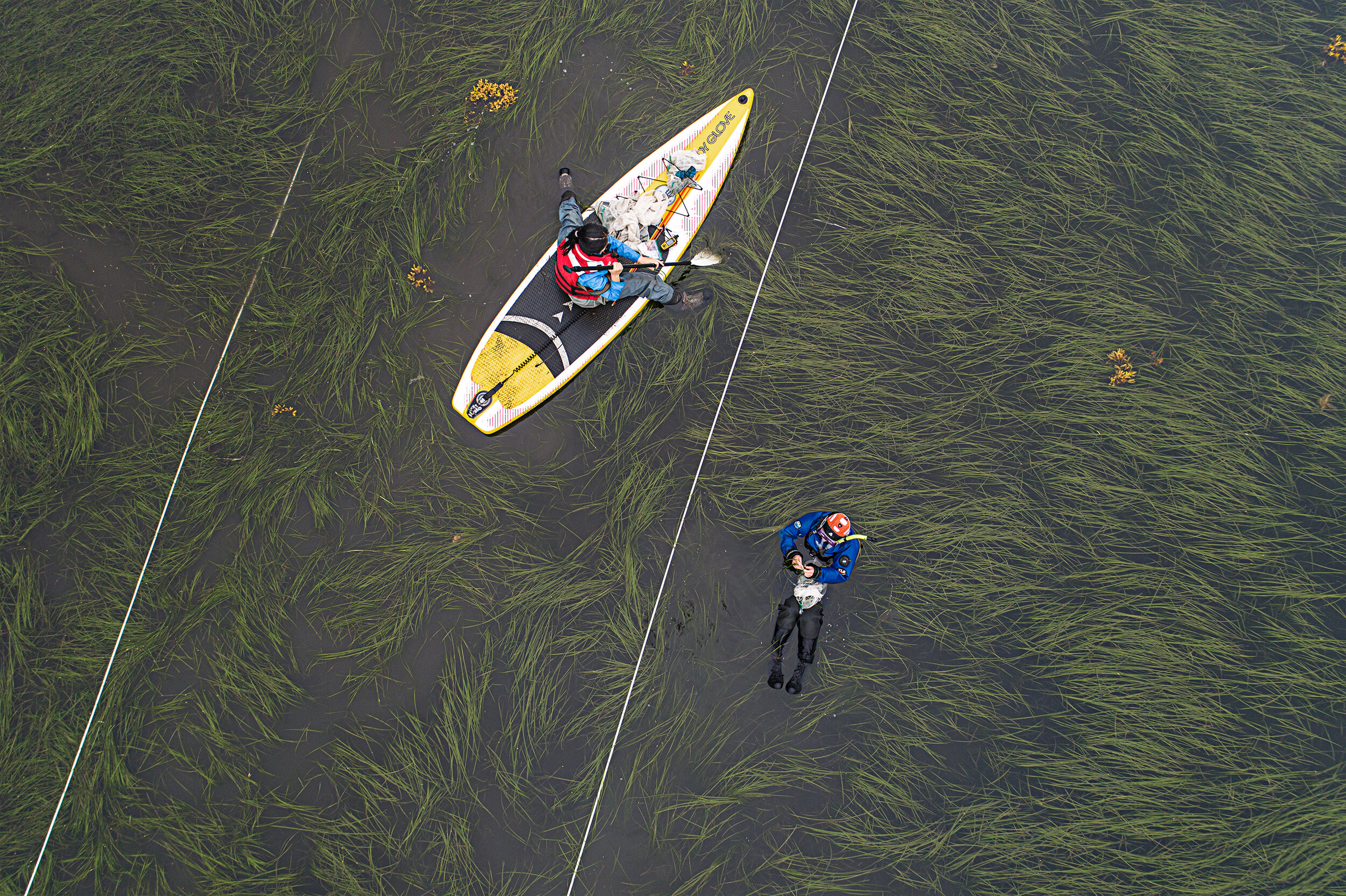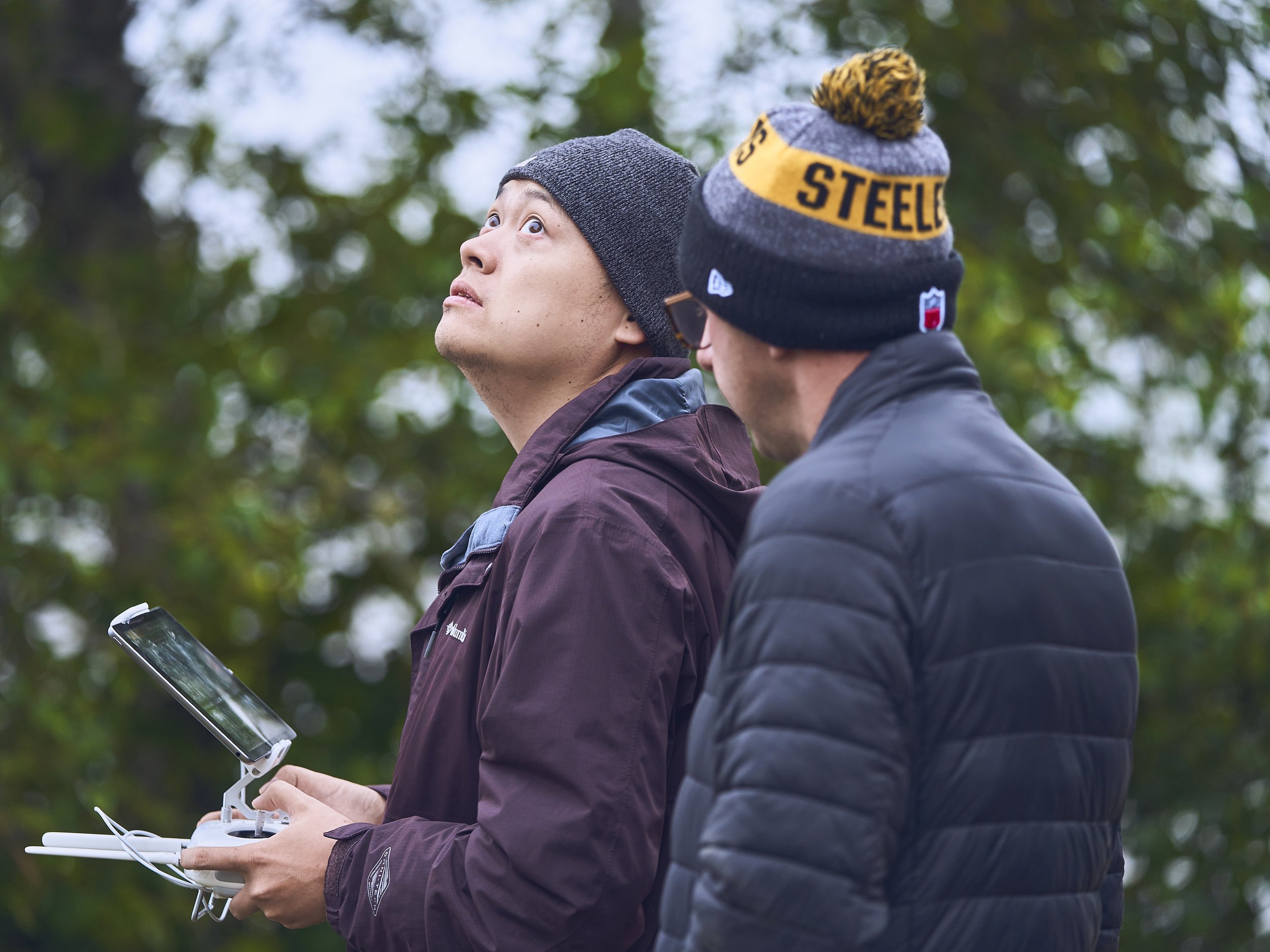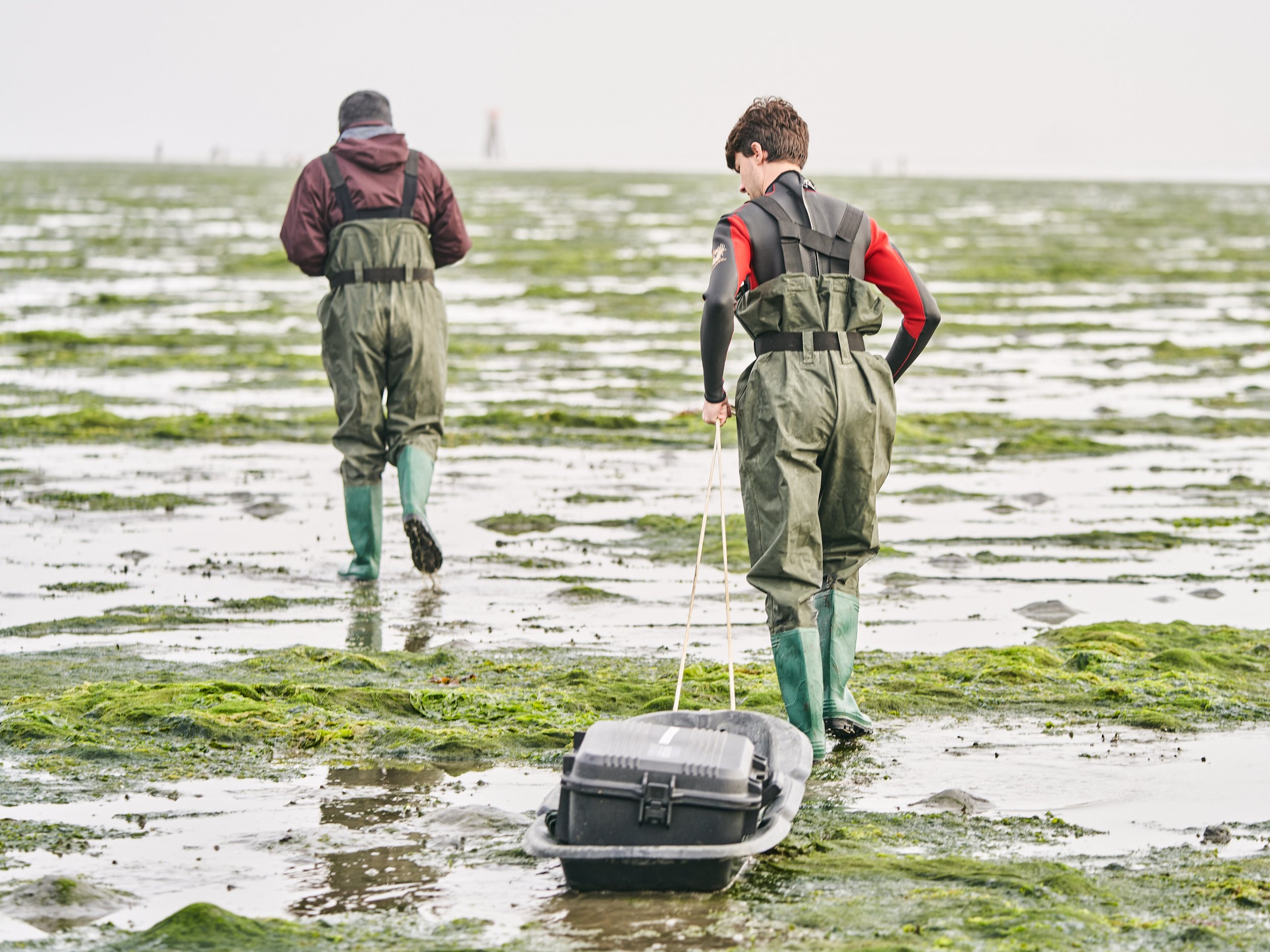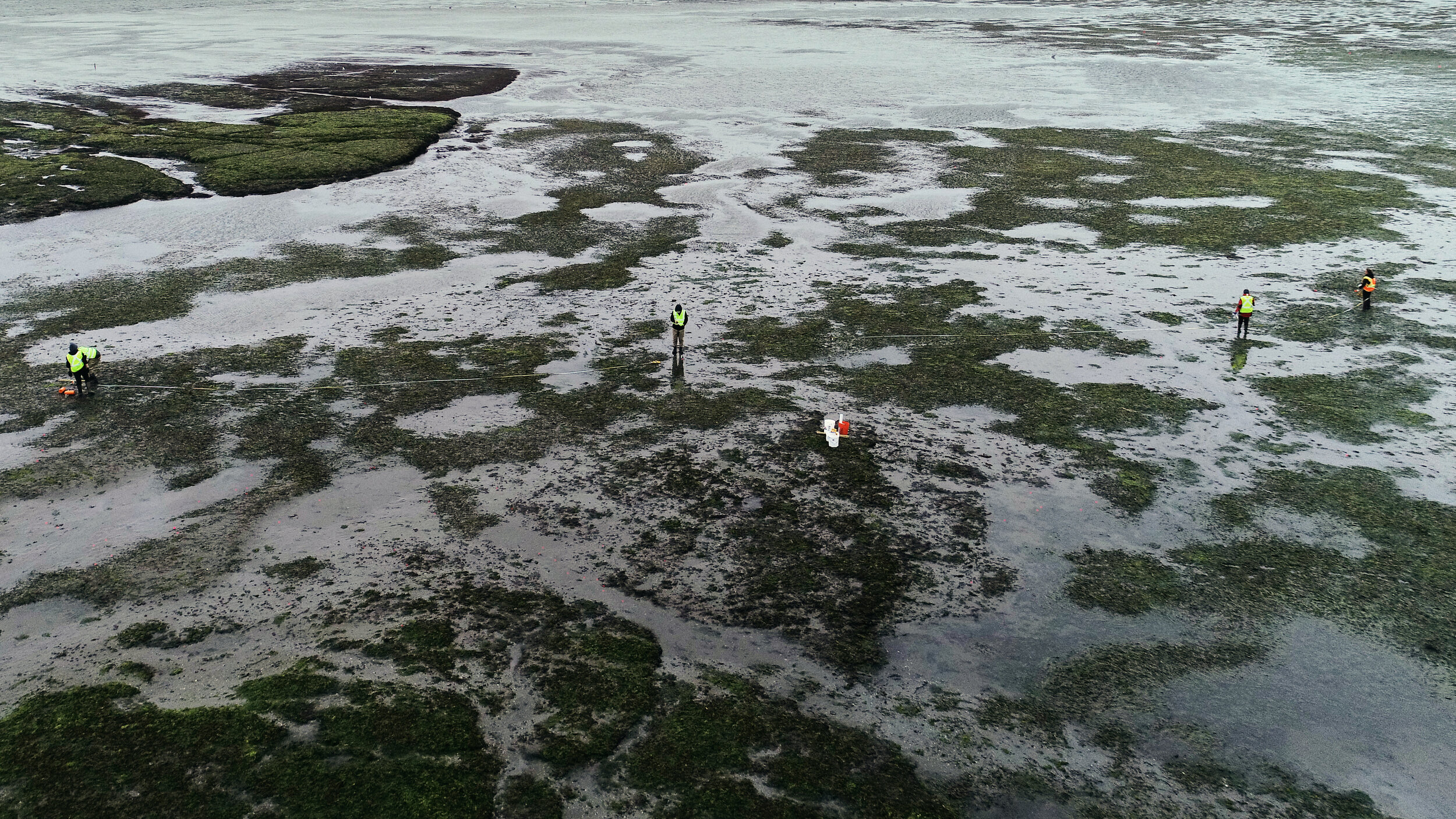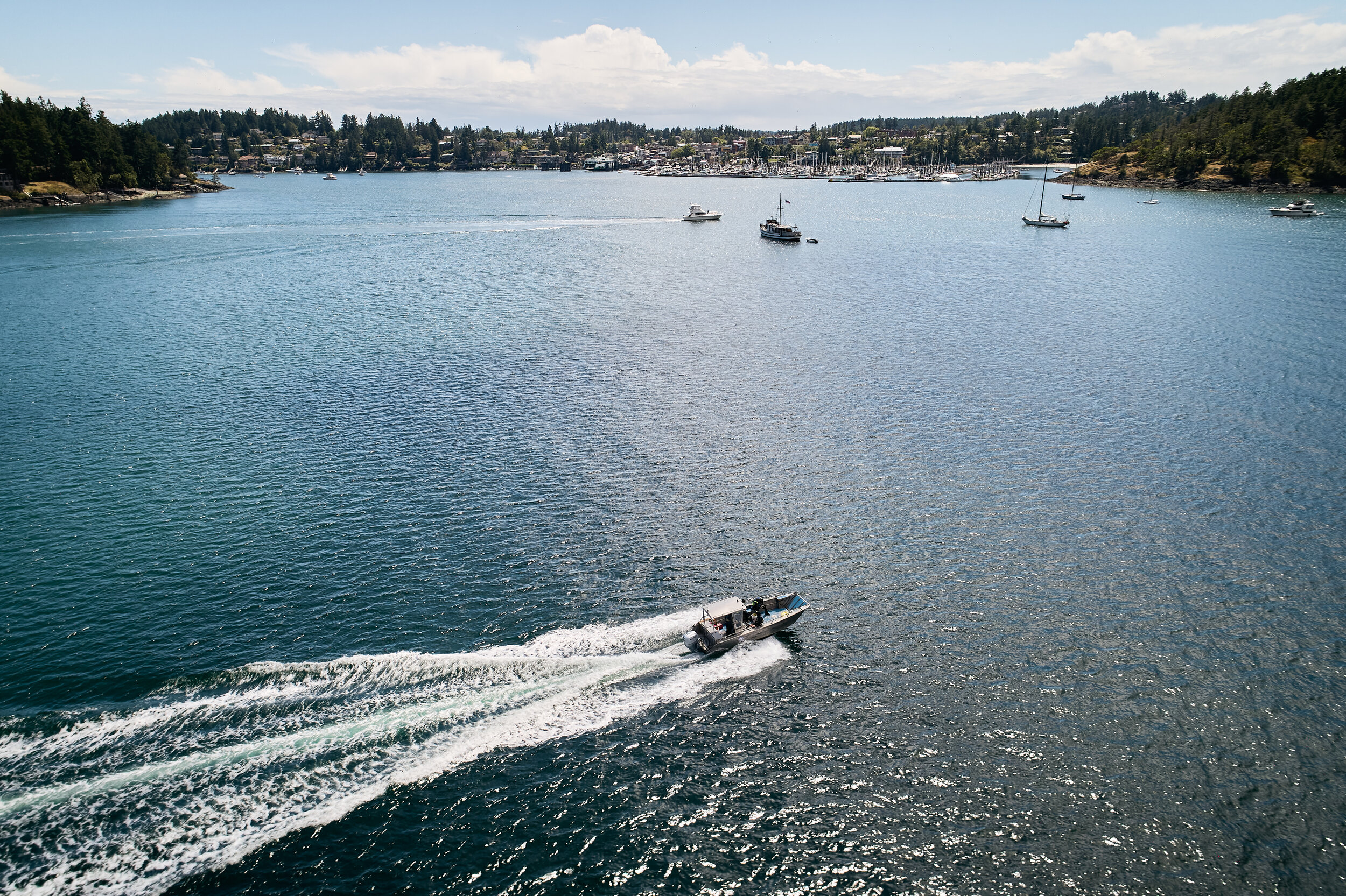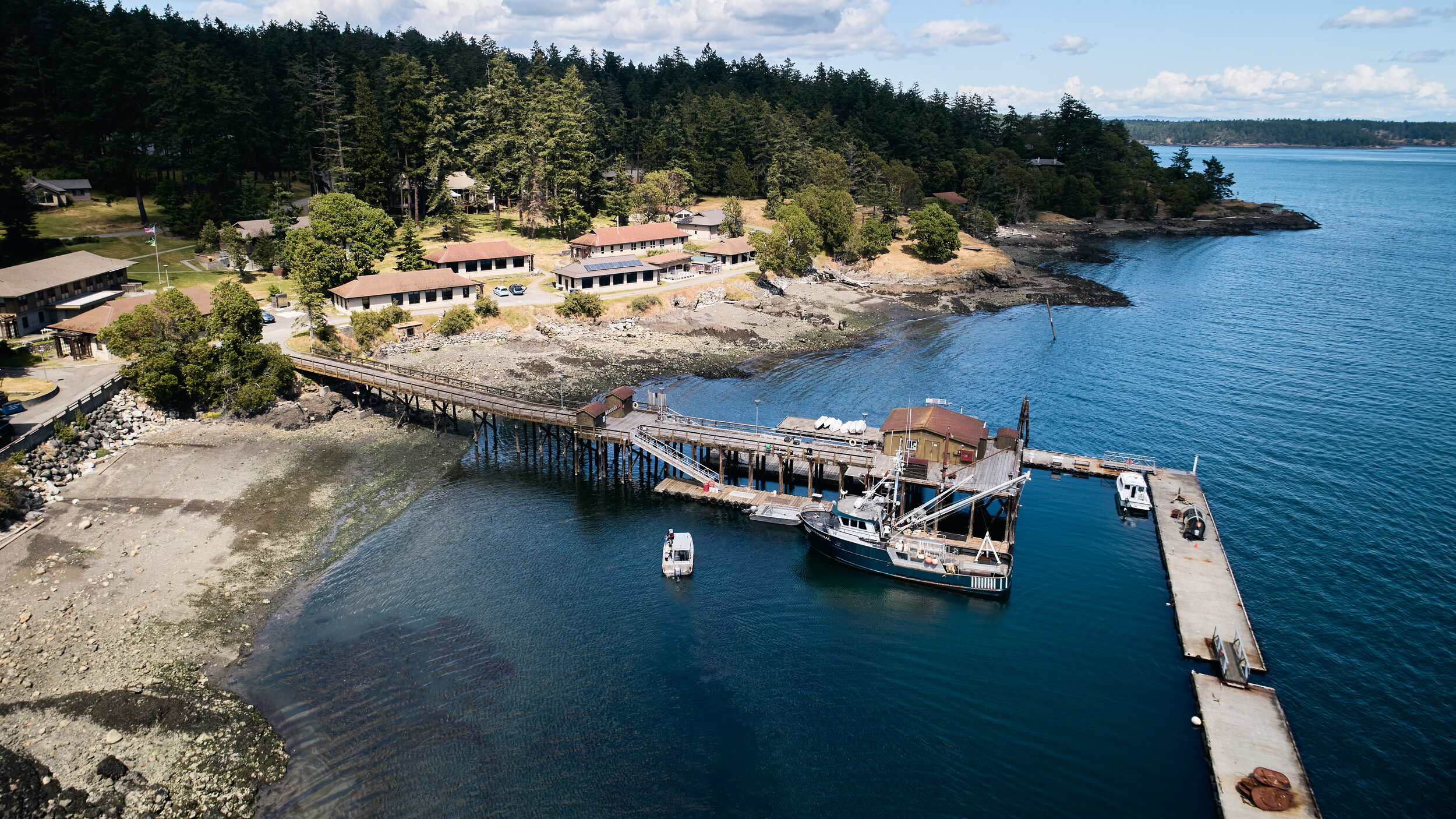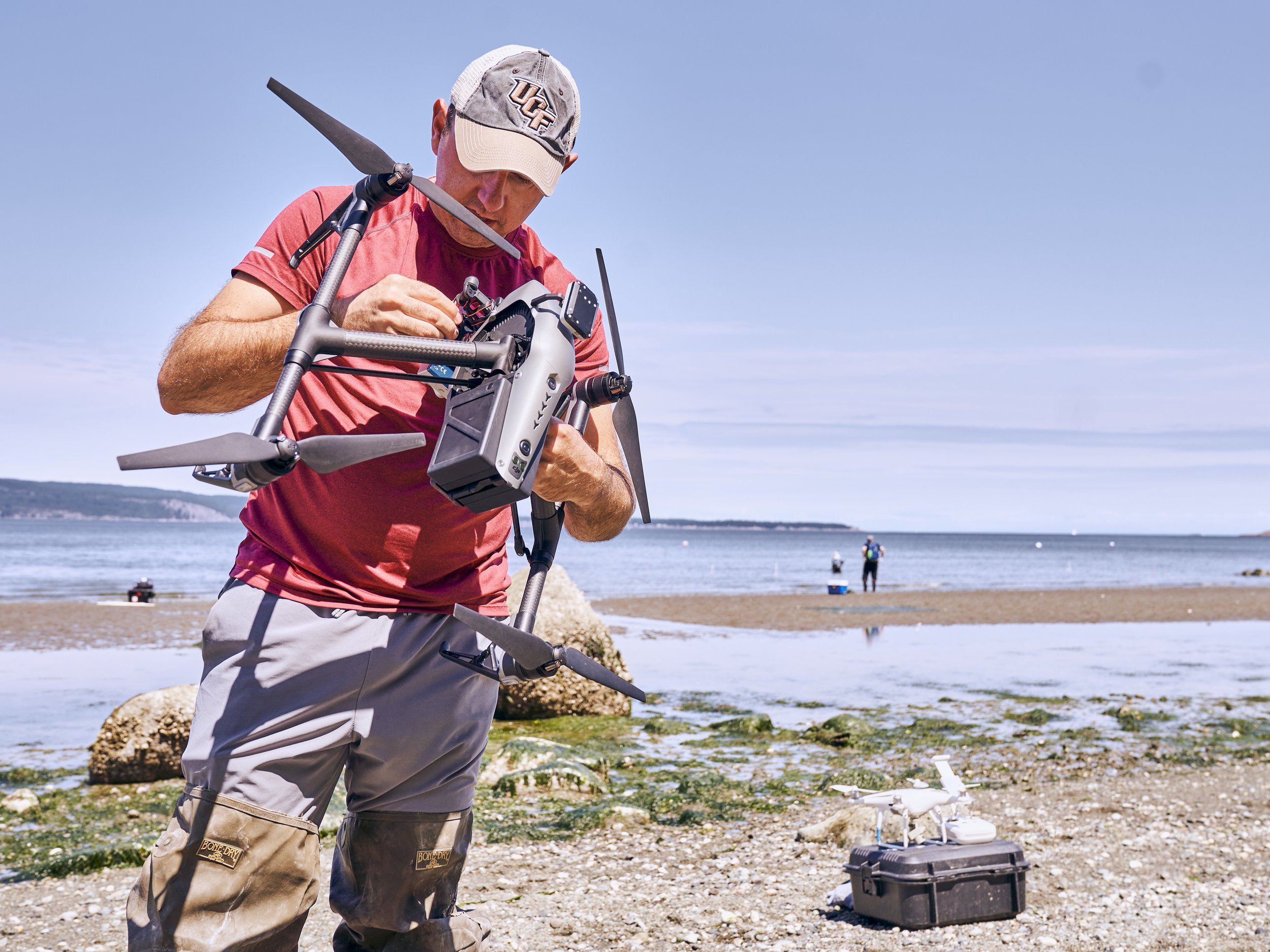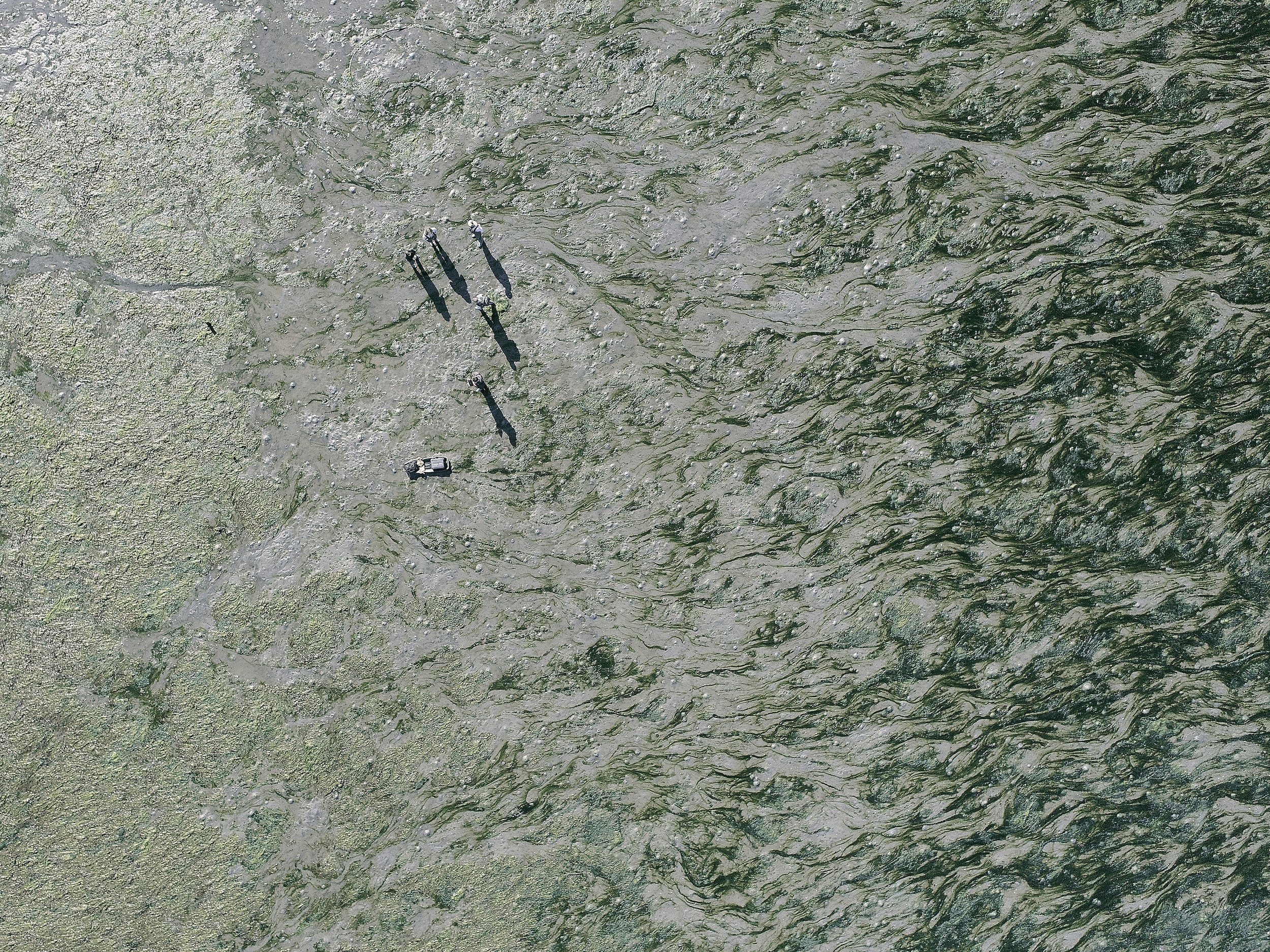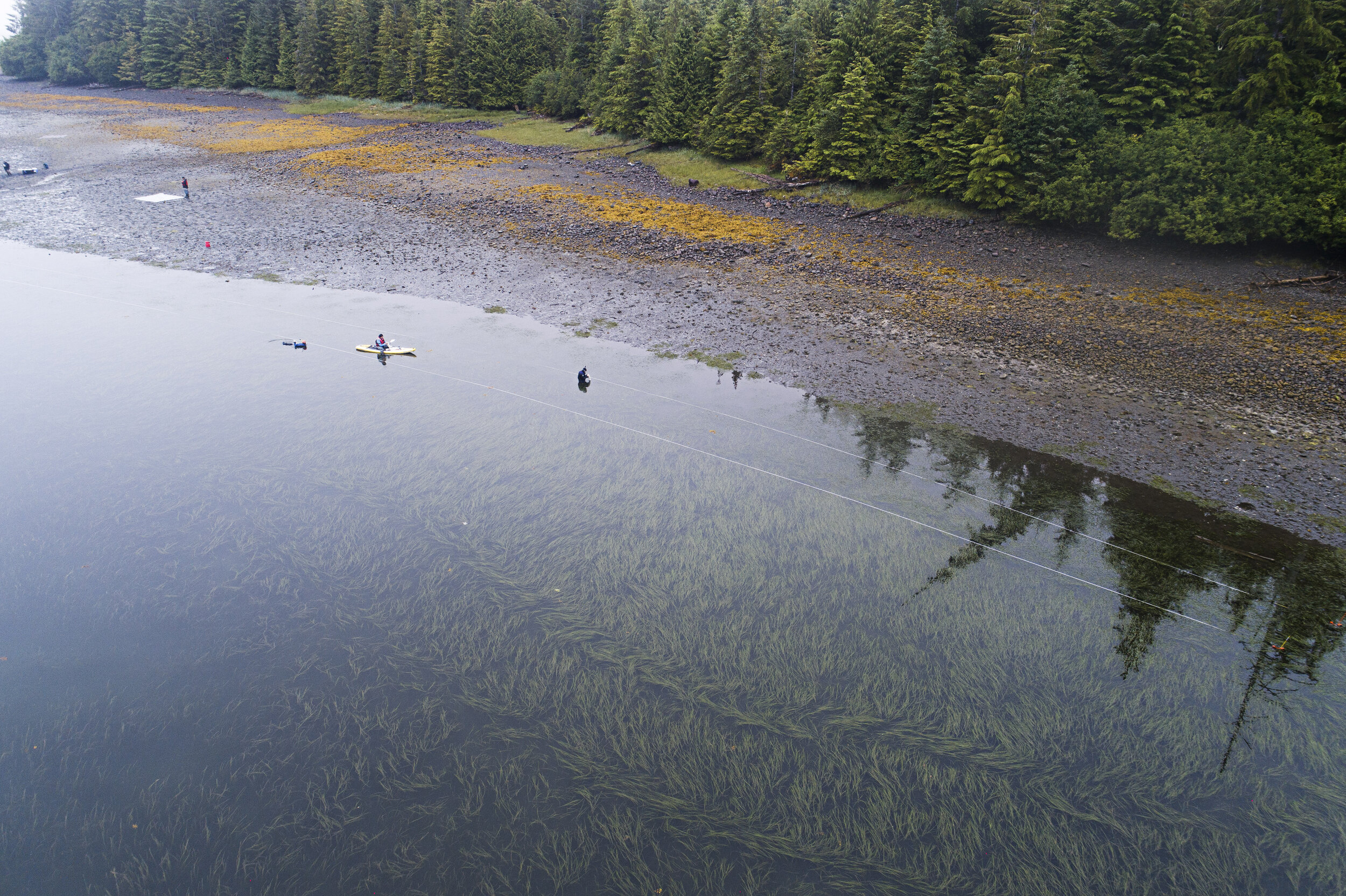
NSF Smithsonian Drones
Drone mapping eelgrass across 23 degrees of latitude on the Pacific Coast of North America
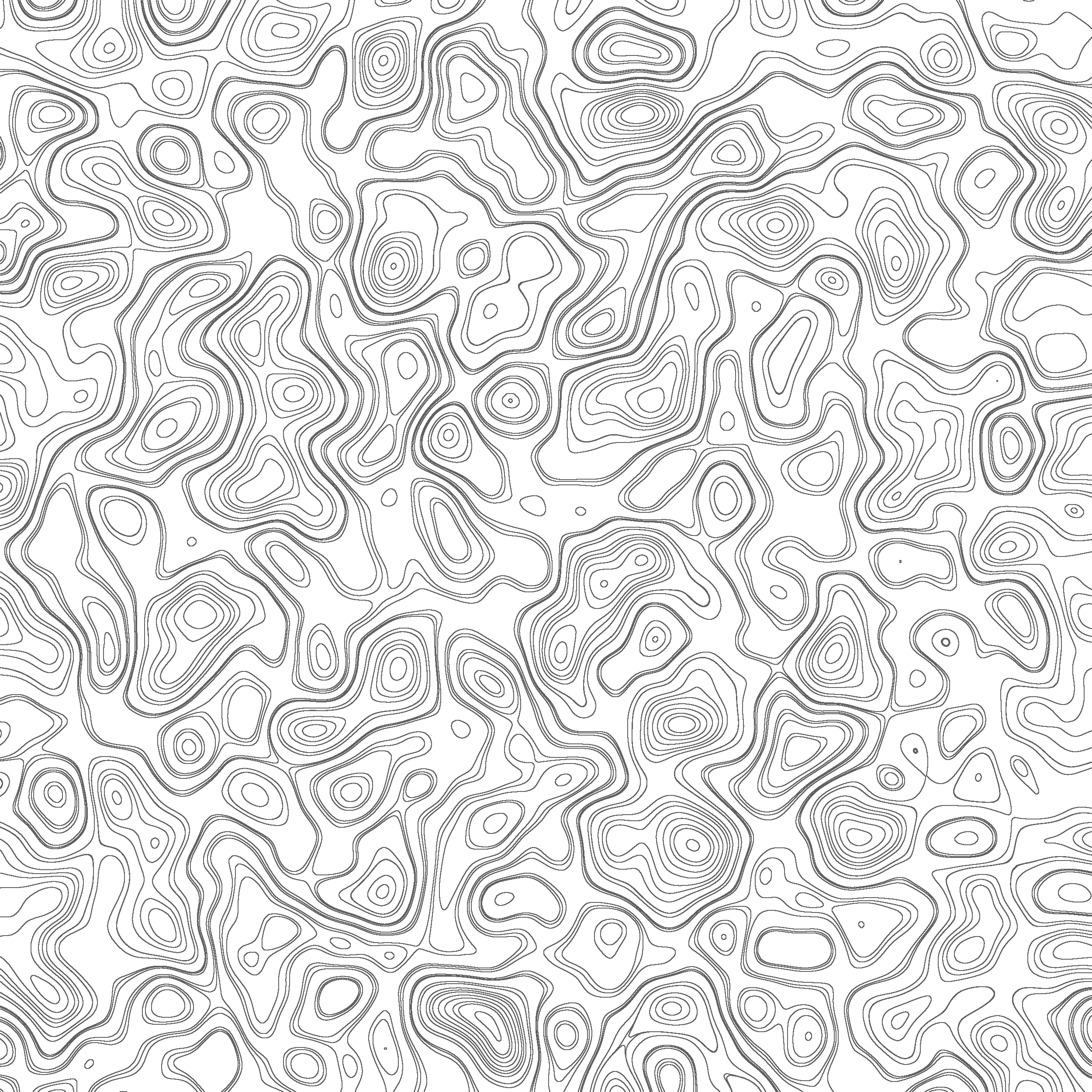
Team science
We are part of a $1.3 million grant from the U.S. National Science Foundation led by MarineGeo at the Smithsonian Institution. Together, we work across 23 degrees of latitude with Cornell University, University of California-Davis, San Diego State University, Oregon State University, University of Alaska Fairbanks, and Hakai Institute.

Drone Mapping Eelgrass
We use Unoccupied Aerial Systems (UAS) or drones to measure eelgrass meadow extent, patchiness, and dynamics through time. Drone imagery is collected annually. We use RGB mapping, multi-spectral mapping, historical satellite imagery, in situ measurements and GIS analyses.
In addition, we train all community partners, including K-12 teachers, high school students, as well as citizen scientists, in the use of drones for the research. Our team includes Federal Aviation Administration (FAA) Part 107 drone certified pilots.

Story Map
View the award-winning Esri and National Geographic Story Map below for further information on the Smithsonian Eelgrass project

Open-Access Data
View and download the full-resolution orthomosaic imagery

Learning with Science’s Next Generation
As part of our NSF Research Experiences for Teachers supplemental grant, in March 2022, Astronaut high school teachers and students (Florida) joined us in the field (California). As they traveled from coast to coast and then learned about drone mapping, see what happened.
